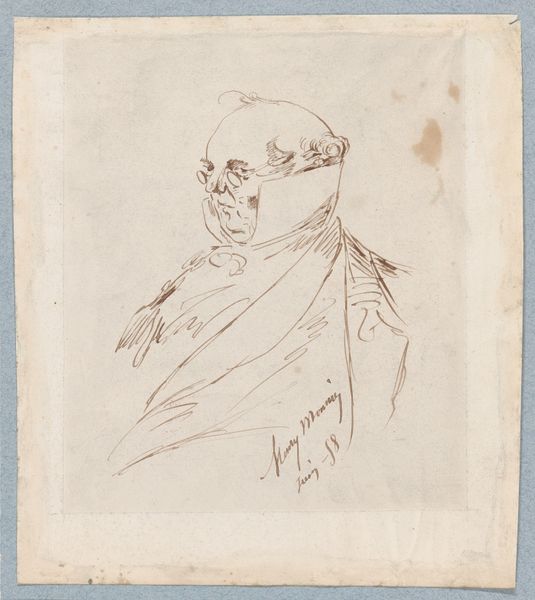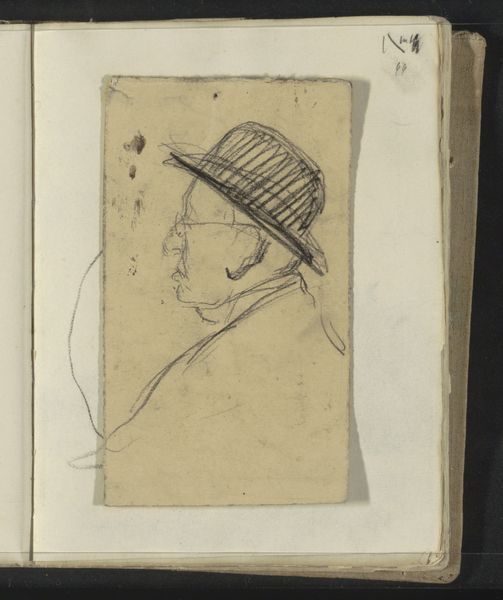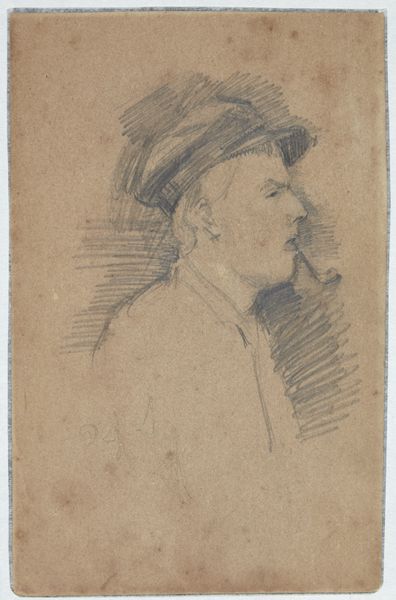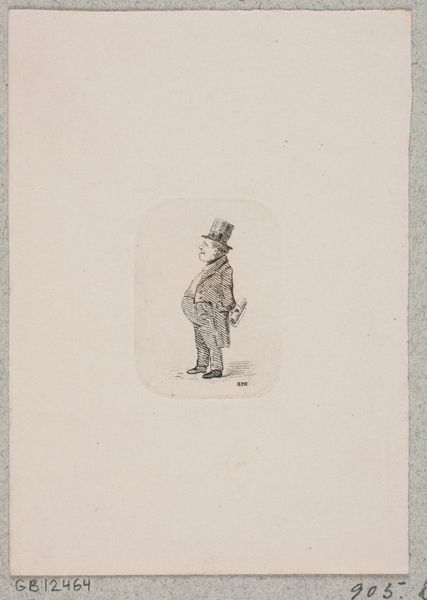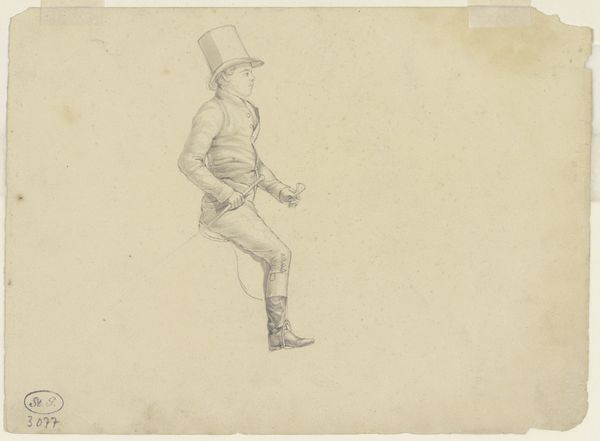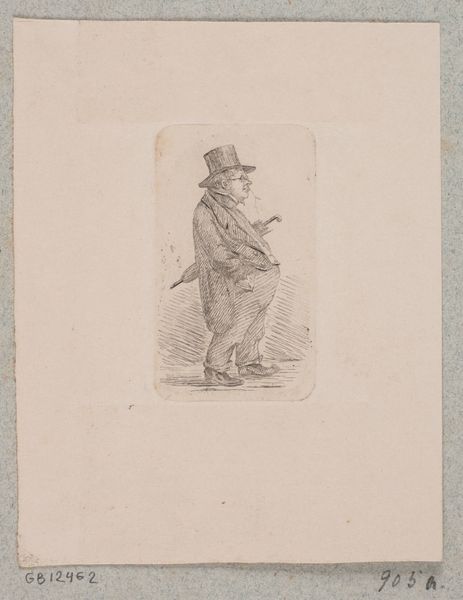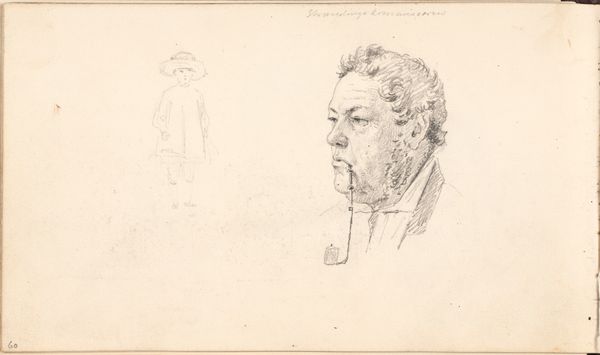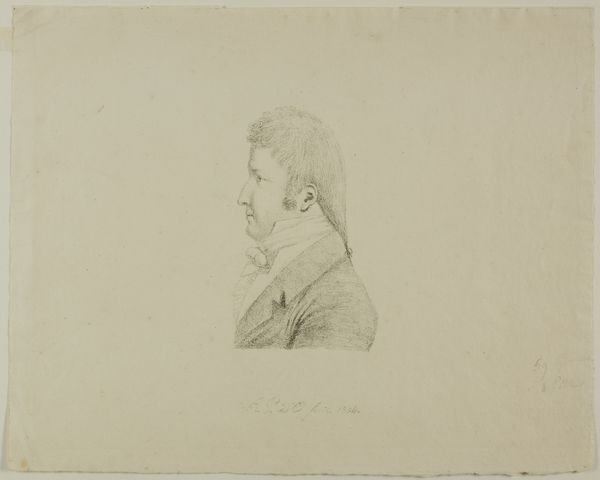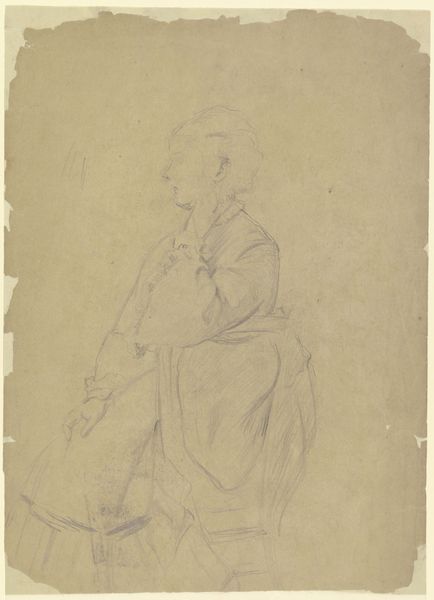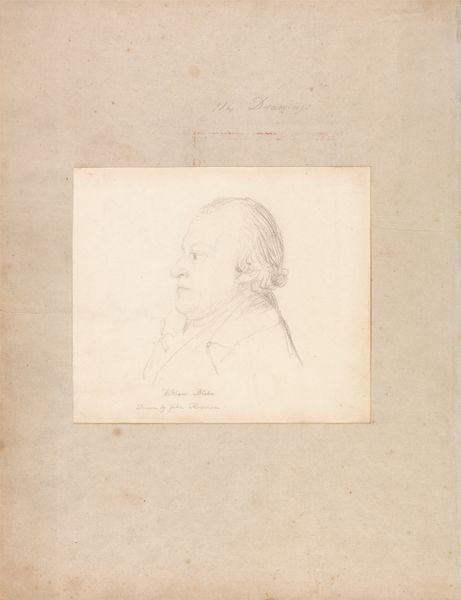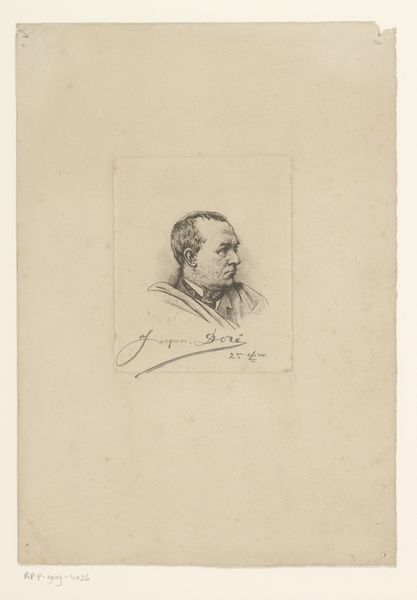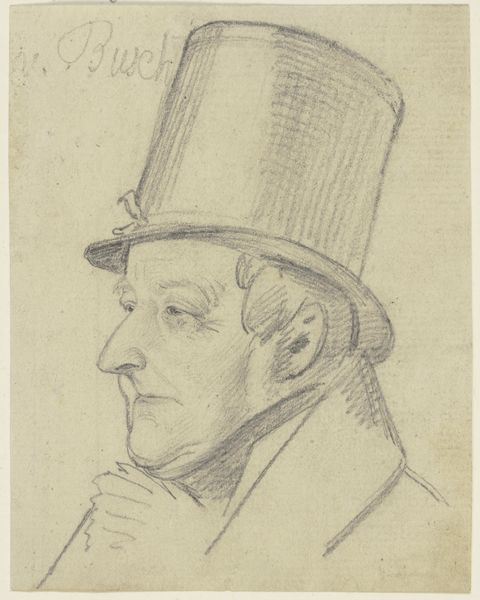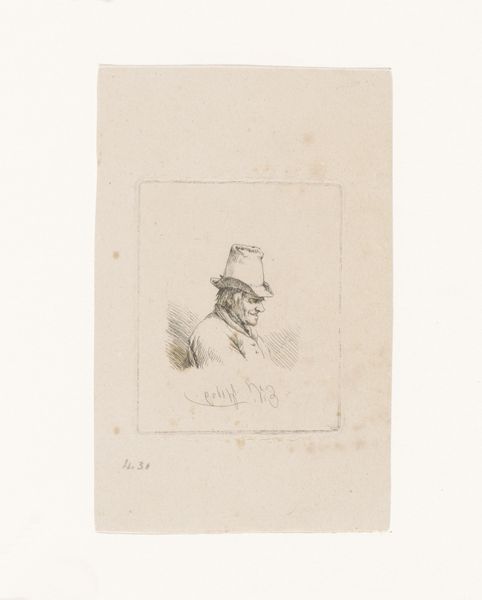
drawing, pencil
#
portrait
#
drawing
#
self-portrait
#
pencil
#
academic-art
Dimensions: sheet: 30.5 × 45.7 cm (12 × 18 in.)
Copyright: National Gallery of Art: CC0 1.0
Curator: Here we have a "Self-Portrait" by John Vanderlyn, rendered in pencil. Editor: The austerity of the drawing immediately strikes me. The sepia-toned paper and the precision of the lines give it a reserved and almost melancholic feeling. Curator: Vanderlyn’s artistic journey offers a complex narrative about ambition and recognition. His career took him to Paris where he absorbed Neoclassical principles, but he struggled to achieve consistent success. I see this portrait through that lens, as perhaps capturing a moment of introspection, a wrestling with self-representation amidst broader socio-political expectations and artistic currents. Consider the impact of the French Revolution on art at the time. Editor: The hat—it speaks volumes about societal status. Placed prominently atop his head, it anchors him, solidifies his identity as someone of a particular station. The gaze directed away, a stoic profile—he’s projecting a deliberate image. It is almost an archetype. I see a connection to other historical portraits where such visual elements signify belonging to a certain intellectual class. Curator: Absolutely, and portraits, particularly self-portraits, served as declarations. The French Revolution shifted representation; artists became arbiters of their own image, responding to a society in flux and demanding a break with established hierarchy. Vanderlyn here engages with that conversation of agency. We are asked to meet him on his own terms. What is it to construct your self within social change? Editor: It makes me think about the universal experience of identity itself. Aren't we all curating our own images, consciously or unconsciously drawing on available symbols? In this portrait, the top hat is the cultural signifier. He selects, so the hat is no accident; but beyond surface-level interpretation of status, can this also become, as he gazes beyond, also a beacon? Is it an aspirational piece, symbolizing both cultural belonging, or potentially something more to aim at, aspire to, seek beyond? Curator: The "Self-Portrait," while simple in execution, reveals a profound statement about selfhood. The intersection between public persona and interiority and how an artist presents himself amid cultural expectations, or challenges. Editor: The interplay of light and shadow—both literal and metaphorical. I see how an age reveals its cultural preoccupations with images; something this artwork elegantly reflects.
Comments
No comments
Be the first to comment and join the conversation on the ultimate creative platform.
